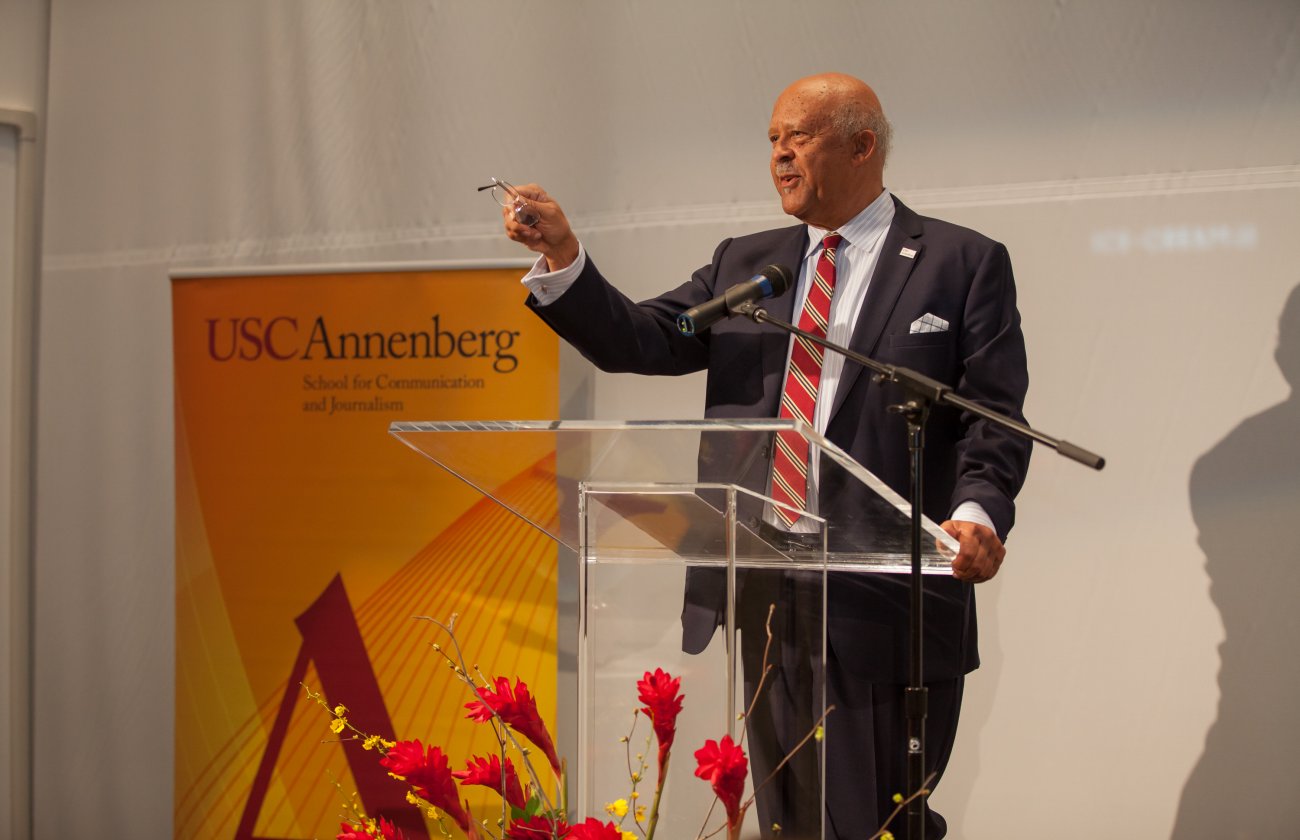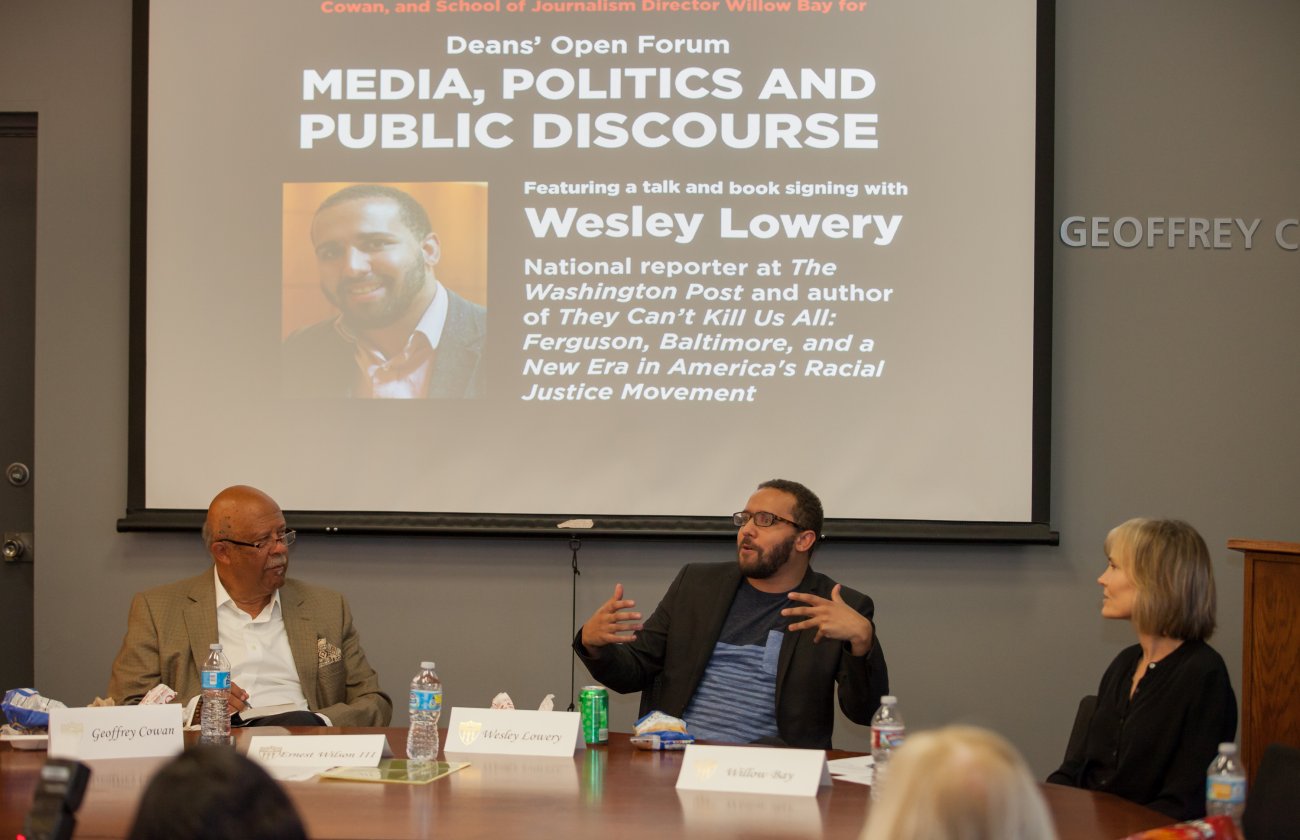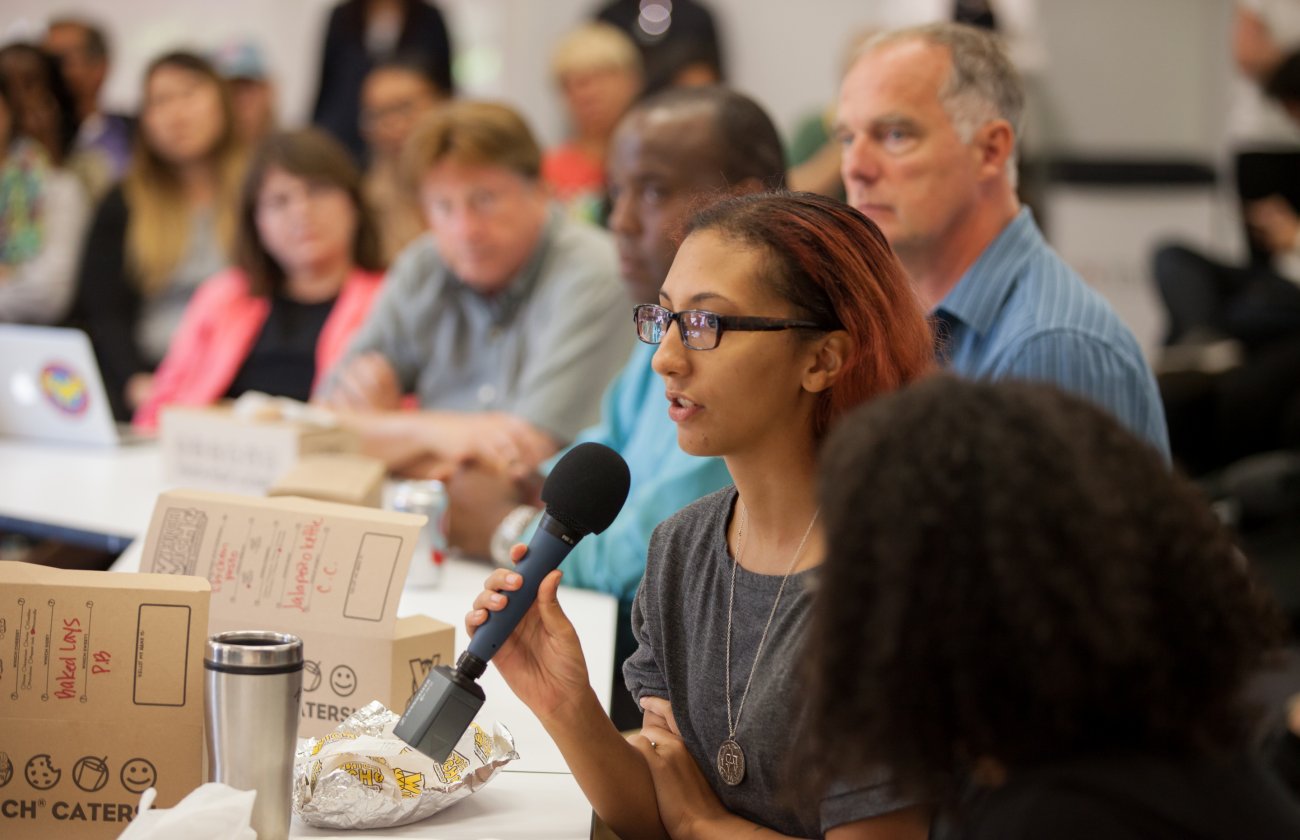As part of USC Annenberg’s diversity initiative, the School of Journalism began educating new students this academic year with a “Fault Lines” approach that teaches them to better recognize race, class, gender/sexual orientation, generation and geography when reporting.
The Fault Lines concept, developed by the Robert C. Maynard Institute for Journalism Education, helps reporters understand and cover a diverse spectrum of people. The curriculum committee this last fall began using the concept as a required component in all core reporting and writing classes.
“I love that USC Annenberg is giving students the tools they need to cover diversity before they get to the newsroom,” said Dori Maynard, president of the Maynard Institute. “We’re very excited about this. Teaching students to cover communities that don’t look like their own is essential to journalism.”
The School of Journalism embeds Fault Lines into the curriculum with formal education in the classroom.
“Here at USC Annenberg, how we teach, think and talk about difference is of supreme importance as we educate our students for the future,” Dean Ernest J. Wilson III said. “We want to ensure that diversity underlies everything we do – diversity not only of people, but of ideas, approaches and actions. A respect for diversity and inclusiveness is one of the core values of our School.”
Journalism professor Bill Celis, who chaired a report on the status of diversity at USC Annenberg, said he has used Fault Lines for many years in his teaching because they are vital aspects of most stories.
“As a profession, we have not historically done well covering the intersections of race, class, gender, generation and geography,” Celis said. “The goal is to teach a new generation of journalists and communication professionals to understand the multiple layers of a story so that they render it accurately.”
USC Annenberg and the Maynard Institute have a long-standing relationship. Adjunct journalism professor Frank Sotomayor, a co-founder of the Maynard, introduced Fault Lines last fall to undergraduate and graduate students in beginning news writing classes.
“The Fault Lines framework takes the idea of diversity away from an abstract concept, which can be very subjective, and instead presents a practical and structured way of looking at our society,” said Sotomayor, a senior fellow at the Institute for Justice and Journalism and former editor at the Los Angeles Times. “Recognizing the entire community is an important part of being a good journalist.”
The Fault Lines concept, originally conceived by the late Robert Maynard in the early 1990s, has evolved over time. Sotomayor noted that sexual orientation was not part of the original concept but was added later.
As part of his presentations, Sotomayor asked students to think about other Fault Lines that can be important. They came up with answers such as religion, politics and disabilities. Sotomayor said Fault Lines offers a good foundation for getting students to think about how to use diverse sources in covering stories and how to get diverse subjects in news gathering.
“It’s about being inclusive, or at least thinking inclusively,” he said. “If you’re writing a 6-inch print story, you might not have space to include a lot of diversity. But know that next time you can go to another source or do a follow-up story to include other viewpoints.”
Carola Weil, associate dean for planning and strategic initiatives, said formalizing Fault Lines education is a strong step – but not the first or last step – toward understanding diversity.
“Formalizing diversity education has become a greater priority so it’s not something left to chance but part of the very DNA of the School,” Weil said. “By paying attention to the whole range of identity issues and characteristics that define our audiences and contributors, we can make sure that we are truly serving the public interest.”
Fault Lines
Maynard Institute for Journalism Education
More info (PDF)
USC Annenberg's Diversity Initiative
USC Annenberg Diversity Course List (PDF)
What do you think? Join the conversation on our Facebook page.








